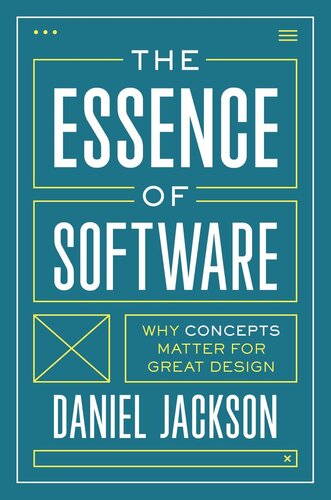

Most ebook files are in PDF format, so you can easily read them using various software such as Foxit Reader or directly on the Google Chrome browser.
Some ebook files are released by publishers in other formats such as .awz, .mobi, .epub, .fb2, etc. You may need to install specific software to read these formats on mobile/PC, such as Calibre.
Please read the tutorial at this link: https://ebookbell.com/faq
We offer FREE conversion to the popular formats you request; however, this may take some time. Therefore, right after payment, please email us, and we will try to provide the service as quickly as possible.
For some exceptional file formats or broken links (if any), please refrain from opening any disputes. Instead, email us first, and we will try to assist within a maximum of 6 hours.
EbookBell Team

4.0
26 reviewsA revolutionary concept-based approach to thinking about, designing, and interacting with software
As our dependence on technology increases, the design of software—which shapes functionality and user experience—matters more than ever before. Why then is so much software flawed? Why hasn’t there been a systematic and scalable way to create software that is easy to use, robust, and secure?
Examining these issues in depth, The Essence of Software introduces a theory of software design that gives new answers to old questions. Daniel Jackson explains that a software system should be viewed as a collection of interacting concepts, breaking the functionality into manageable parts and providing a new framework for thinking about design. Through this radical and original perspective, Jackson lays out a practical and coherent path, accessible to anyone—from strategist and marketer to UX designer, architect, or programmer—for making software that is empowering, dependable, and a delight to use.
Jackson explores every aspect of concepts—what they are and aren’t, how to identify them, how to define them, and more—and offers prescriptive principles and practical tips that can be applied cost-effectively in a wide range of domains. He applies these ideas to contemporary software designs, drawing examples from leading software manufacturers such as Adobe, Apple, Dropbox, Facebook, Google, Microsoft, Twitter, and others. Jackson shows how concepts let designers preserve and reuse design knowledge, rather than starting from scratch in every project.
An argument against the status quo and a guide to improvement for both working designers and novices to the field, The Essence of Software brings a fresh approach to software and its creation.